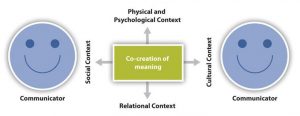“Organizational effectiveness does not lie in that narrow minded concept called rationality. It lies in the blend of clearheaded logic and powerful intuition.” (Mintzberg, 2015)
We see a powerful antithesis between rationality on one side and clear logic and intuition on the other side. We need to fill in the blanks based on a synthesized concept and intuition because our world is complex, uncomplete and chaotic. There is no golden key for success. What worked in the past does not mean it will work in the present. There is no assurance for an effective organizational outcome by interventions. It’s our intuition by trial and error that makes us flexible in using the right tool at the right moment, in the right place that brings us on the right track. In order to let our intuition and logic do her job we need to give her the context, framework and approach (Pijl, 2018).
RECOGNIZE THE ‘NEW WINE IN OLD SACKS’
What will happen if you put new wine in old sacs? It will break! Because old sacks don’t have the ability to adapt the strength of the new wine. So what are our old sacks? In my opinion it starts by realizing that organizing effectively does not end by defining an organogram how we must divide our organisation in business units, or how we conduct managerial functions, where information is simply exchanged effectively by sender and receiver. Ashcraft, Kuhn and Cooren (2009) calls this kind of perspective the transmission model that primary focus their questions on effectiveness for example:
‘How can communication meet a situated goals, like clarity or display or authority?’

Koschmann (2012) says about this topic:
‘Approaching an organisation by distribution of information works just fine in daily business such as making schedules, giving directions, requesting information and so on. But other times situations get complex and when things get complex we need a deeper insight to accomplish our goals’.
Things get complex when conflicts has to be solved between middle management and top management, conflicting realities between intrapreneurs and the service centrum, a changing demanding market, a changing local need of the market, there is more going on than just exchanging information it’s engaging a complex situation where people search for and negotiate meaningful social construct, where problems can be solved. In complex situations you’re not only thinking about how information should be exchanged but also how you are creating social realities (Koschman, 2012), how to conduct optimal situations (Fisher, Ury, & Patton, Excellent onderhandelen, 2016). Because we are working with people not robots. People with unique emotions, minds, ethnicity, religion, culture, gender, values and opinions. The interaction between people creates failure or success. Communication is about listening, understanding, connecting, bridging/bonding, creating impact and relationships (Doherty, 2018). Organizing effectively starts by seeing the picture that communication provides an explanatory framework from which to understand the complexities of organizational life (Koschman, 2012). Ascraft, Kuhn & Cooren (2009) define this as the constitutive model. The primary question is not one of effectiveness but of influence and possibility for example:
‘How does communication constitute the realities of organizational life?’

The transmission model is an important element in conducting a steady vision. It is a building block to create simplicity in who is when responsible and how to communicate on daily base. The constitutive model provide building blocks how to understand success and failure from the past and how to create a synthesized concept agile for the future. It connects the dots of a customer-supplier relationship, problem solving interventions and provide enforcers for a healthy organisational process (Fisher, Ury, & Patton, 2016). Its bringing hard element like formal functions, structures and soft elements like context, unique characters together to explain and find solutions for a problem. It stimulate us to look at our individual key players how to bring them together in a way it creates a combined success.
Thus by creating a strong organisation we must realize that an organisation is more than just creating effective exchange lines of information. It’s about understanding that unique people creates unique meanings (Searle, 2010). If we want to understand what’s going on. We need to investigate the dynamics of communication and the way they create an organisation, strategy and leadership. This paper will explain in depth how to recognize the dynamics and create co-creation in way the organisation can grow to a healthy future.
✓ Which kind of model do you recognize in your current vision if we think about creating a meaningful organization?
This blog is part 2 of my adventure on Strategy, Vision and Leadership
